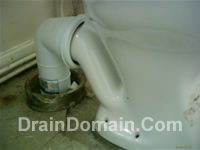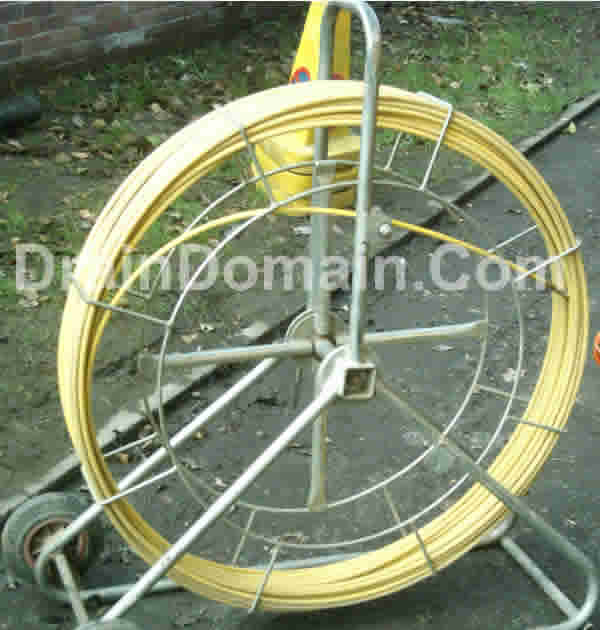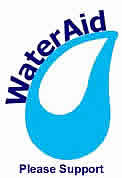
Most Visited
Rats In Your Home
Drain Flies
Why Drains Block
Internal Venting
Who`s Drain Is It ?
Drain Surveys
No-Dig Repairs
Drain Location
Drain Rods Stuck
Find A Contractor
Drain Pipe Work
Clay Drain Pipes
Plastic Pipe Work
Pitch Fibre Pipes
Cast Iron Pipes
Concrete Pipes
Drainage Parts
Drain Gullies
Dropshafts
Interceptor Traps
Soil Vent Pipes
Anti-Flood Valves
Manholes
Drain Repairs
Excavations
Drain Lining
Patch Lining
Pipe Bursting
Re-Rounding
Drainage
Investigations
Drain Surveys
Sonar Tracing
Last updated 26 January, 2014
draindmain.com > site map > typical drainage problems > blocked drains
Blocked Drain Diagnosis - The Early Warning Signs
There are the classic gurgling sounds that you hear after you have flushed the toilet, these can come from the toilet, sink, bath or shower and this is often due to the water you have just flushed displacing trapped air in the drainage system, the gurgling is the trapped air pushing up through the water trap. The water level in the toilet, bath or sink draining slowly or rising higher than usual and perversely the water level in the toilet dropping lower than usual, this is often due to the water being syphoned out of the pan because of problems further down the system. Bad smells and internal venting can be due to water being displaced in the traps on sinks, baths etc and blocked and defective drains can leak into sub-floors again causing bad smells within the property. The BasicsThe following are some basic steps you can take to locate or identify the extent of a blockage on a drainage system whether it be internal or external, this can be useful to the homeowner as it can not only help you inform your contractor of the type of equipment he will require, with a little knowledge behind you can stop the rogue element of the trade dragging a job out and making camp for the day on an extortionate half hourly rate. A blocked toilet, gully or bath can be just that a simple blockage local to the point of the standing or slow draining water, or it can be an indication of bigger problems within the system. I would not for one moment suggest that you can list every scenario possible because you can`t, but there are certain processes of elimination that can be followed. If there are chambers lift them it is basic good practice but you would be amazed how many contractors attack the overflowing gully, toilet or blocked soil stack before they have done the basics. Another reason for lifting any available chambers is when you have cleared the blockage you can intercept and identify the obstruction and notify the client that his wife has been flushing wet wipes down the pan or hand them back little Freddie's action man. Now i know that anyone remotely connected to the drain game will be screaming "there are no bloody chambers, smart arse" !. And yes that`s one of the great joys of our business that in the unlikely event that inspection chambers were installed on the pre-1950s property along comes some some highly intelligent individual laying flags, tarmac or turf and thinks to themselves "I wonder what that eyesores for, i`d best cover that up" because of course chambers and manholes are not things you need really, until you really need them So you have to come at it from another angle, lets say the upstairs toilet is draining slowly the first thing you need to know is, is the Soil Vent Pipe (SVP) it discharges into running free or blocked, if the SVP is at the side of the house give it a tap, empty or full ? Empty then the chances are the blockage is local to the upstairs pan, full then the rest bend at the base may have dropped or the branch line downstream of the SVP may be blocked. But of course its Bank Holiday Friday it`s late afternoon and it couldn't`t be that simple, its a modern property with an internal SVP that`s boxed in behind the kitchen units so you can`t get to it, you tend to find that if there`s an internal SVP then the bath, sink or shower will discharge directly into it, check it out if they do and they are not backing up then its local to the toilet and its a simple blockage at the back of the pan.
You have now confirmed that its a main line blockage and you have decided to start jetting, there`s no chambers so you have to attack it from a gully, no problem if you have a small diameter leader hose though obviously you will get some restriction from the trap.
I would not be without a carbon rod line threader (you know the type of thing about 60mtrs of carbon rod on a reel) and a sonar tracer, while your stood about waiting for the jetting unit to fill up you can have the tracer in the system and know the exact line of the drainage run and the point of an obstruction sussed out. Another reason for carrying a line threader is when you have an internal SVP or manhole and you can`t risk pumping 30 or 40 gallon of water in, you have a 60mtr rod at your disposal able to negotiate multiple bends and junctions. A good engineer will be able to tell if he`s come up against tree root ingress, grease & fat, a collapse drain or a buried chamber simply by the way the jetting hose and water levels are acting and the colour of the waste water. Like any other trade experience is the key, you get to know an area and a certain type of house construction, you know if there should be a chamber at a certain point or an interceptor trap on the boundary line and ten minutes prodding about with a road pin, spike or metal detector can save a lot of time mindlessly plunging away at the kitchen gully or chamber. Again while that jetter is taking an age to fill up take a casual stroll down the road and look at similar properties, you may well see original chambers and interceptor traps that have since been buried at the property your working on, or you might see newer chambers and rodding points that have been installed due to the same problems your customer is now experiencing.
|
||||||||||||||||
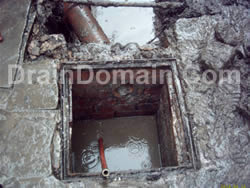 There are several signs to let you know that there may be something untoward going on down in the depths of your drainage system, if you pick up on these sign`s early enough it may not necessarily save you money with regard to having the blocked drain cleared but it could save a lot of cleaning up when the system finally overflows.
There are several signs to let you know that there may be something untoward going on down in the depths of your drainage system, if you pick up on these sign`s early enough it may not necessarily save you money with regard to having the blocked drain cleared but it could save a lot of cleaning up when the system finally overflows.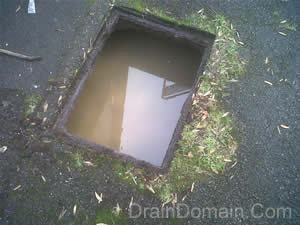 The first job at every drain clearance job is to locate and lift chambers and manholes. Why ? No point messing about with a 4" plunger upstairs in the bathroom when that 40ft Leilandi on the front boundary line has filled the system with tree roots. By lifting covers you get a feeling for the system and can isolate the area your working on, if the first chamber you lift is blocked lift more until your downstream of the blockage, if the chamber is empty move upstream until you find a full one.
The first job at every drain clearance job is to locate and lift chambers and manholes. Why ? No point messing about with a 4" plunger upstairs in the bathroom when that 40ft Leilandi on the front boundary line has filled the system with tree roots. By lifting covers you get a feeling for the system and can isolate the area your working on, if the first chamber you lift is blocked lift more until your downstream of the blockage, if the chamber is empty move upstream until you find a full one. 